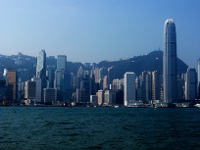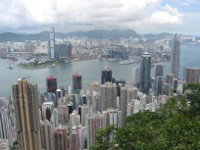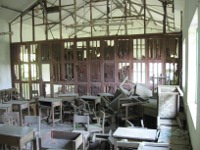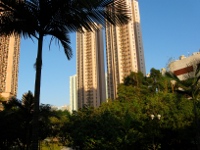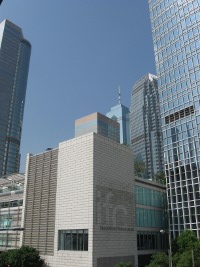Hong Kong at a Glance
Hong Kong (香港, "flagrant harbor") is a futuristic, densely populated, strange, mysterious, surreal, surprising, mind-numbing, inspiring, ever-changing city. In short, it is full of contrasts and therefore a city that naturally arouses curiosity in every person concerned with it. Hong Kong, ore more precisely the Hong Kong Special Administrative Region (HKSAR), is located at the south coast of China near the Pearl River delta which helped make it become the center of business and center it is now. Only one quarter of the area of Hong Kong is urban area [1], which is roughly of the size of Munich. Yet, Hong Kong is home to seven million people [2]. Counting the number of skyscrapers that are over 100m high makes Hong Kong the city with the most skyscrapers of the world [3]. Even without these statistics, visitors are impressed by the surreal and futuristic appearance of this metropole. Hong Kong people natively speak Cantonese; it is a common misbelief among foreigners that the native language was Mandarin Chinese. Hong Kong can be seen as the gate to the west and to the east, as it borders Mainland China in the north. It is a city that always ready for yet another suprise and sometimes pushes you out of your comfort zone.From Stone Age to the Opium War
The region of what is now Hong Kong has seen settlements at least since the late stone age [4]. During dynastic China, the region lived through several turmoils. The British established offices in and warehouses in Guangzhou in the 18th century. The British tried to balance their trade deficit by selling Opium. China was not pleased and prohibited the trade with Opium in China. The British therefore started the First Opium War targeting to lift the ban again. In 1841, Hong Kong Island was taken into British possession. Several other armed conflicts followed. In 1898, taking again advantage of China's weakness in the 19th century, Great-Britain leased the New Territories, a large area in the north of Hong Kong Island, for 99 years from China.From World War I/II to the Cultural Revolution
The British colony of Hong Kong grew in the years before World War II. Many refugees from the fall of the Qing Dynasty in the early 20th century rushed to Hong Kong. Civil war refugees followed, and the numbers of people seeking refuge in Hong Kong grew even more after Japan's invasion of China in World War II. Without sucess, since Japan's subsequent conquest of Hong Kong threw the city into a dark age [5]. After World War II, although facing severe difficulties, Hong Kong became an economic miracle. Cheap labor under poor working conditions was the downside of this development. Hong Kong was destabilized by the Cultural Revolution in China. After Deng Xiaoping took over and assigned Hong Kong an importent role as a gate to the West, Hong Kong started booming.The Return to China
Formally, no treaty forced the British to also return Hong Kong Island and Kowloon in 1997. Yet, as nearly half of the population of Hong Kong lived in the New Territories and because of the pressure of China, Britain agreed in 1984 to return Hong Kong to China. The Tiananmen killings created fear among Hong Kong citizens [4]. After some turbulences and disagreements between China and Britain, Hong Kong was handed over to China in 1997. Democracy, as by Western definitions, is still a long way off and currently things are roughly as in the times of British governors, the power rests in the hands of the chief executive [4].Personal Opinion: Hong Kong of Today
Hong Kong is fascinating. It is a vibrant city. It has a modern and fully developed public transportation system that allows virtually all Hong Kong people to move between any two locations in Hong Kong. The variety of local and international food is a constant source of delight, and both locals and visitors enjoy eating. The city seems to be in a constant frenzy, whose downside is definitely its problems in environmental issues, such as air pollution and water pollution. Here Hong Kong needs to catch up. Also, the extremely low number of births gives rise to the questions about how to set priorities in one's life. But after all, Hong Kong is a city that welcomes visitors and people from all over the world, and offers hem more surprises than they can digest in a few months.Sources
- Hong Kong - the Facts. http://www.gov.hk/en/about/abouthk/facts.htm accessed 2011-12-23
- CIA World Factbook: Hong Kong. https://www.cia.gov/library/publications/the-world-factbook/geos/hk.html accessed 2011-12-22
- The Worlds Tallest 50 Urban Agglomerations http://www.ctbuh.org/HighRiseInfo/TallestDatabase/50TallestAgglomerations/tabid/1006/language/en-GB/Default.aspx accessed 2011-12-22
- Hong Kong & Macau. Stone, A. et al. Lonely Planet, 2008
- Hong Kong Museum of History.http://hk.history.museum accessed 2011-12-22

